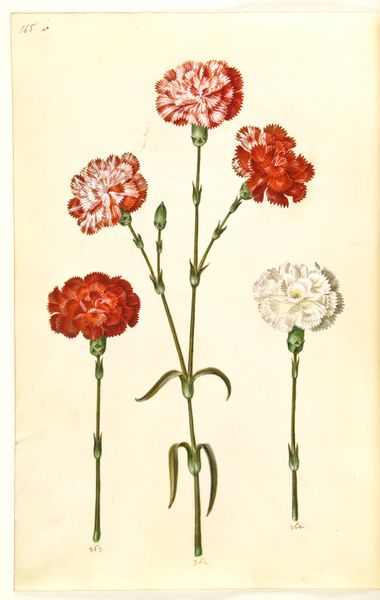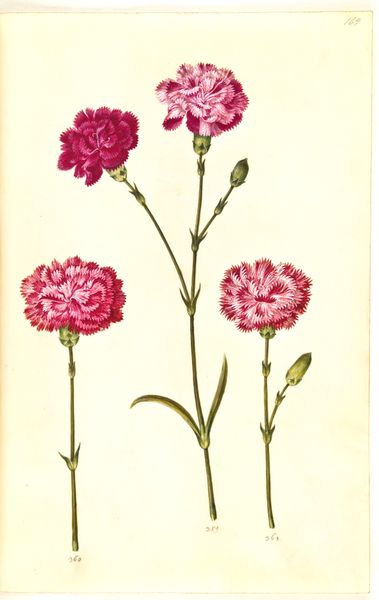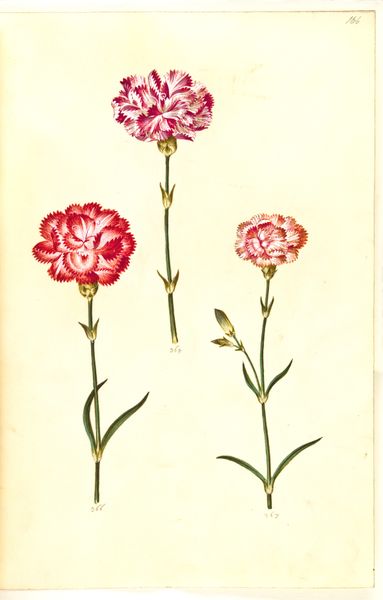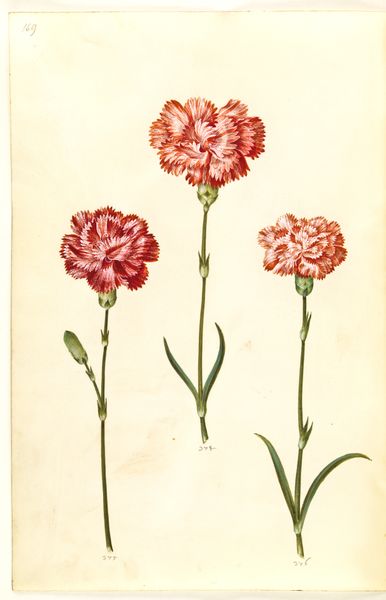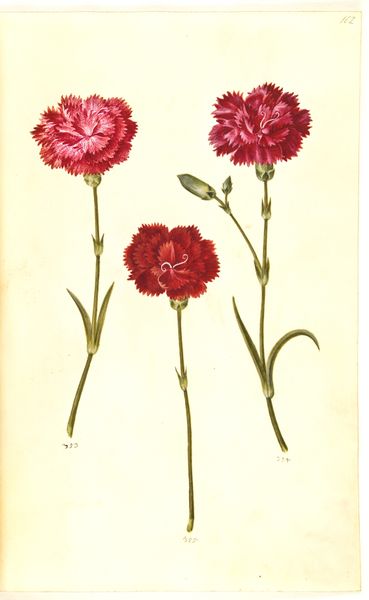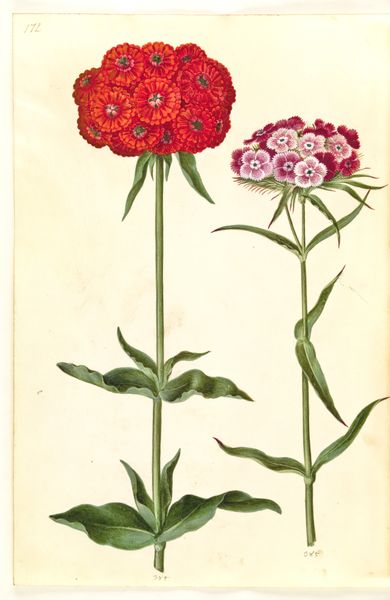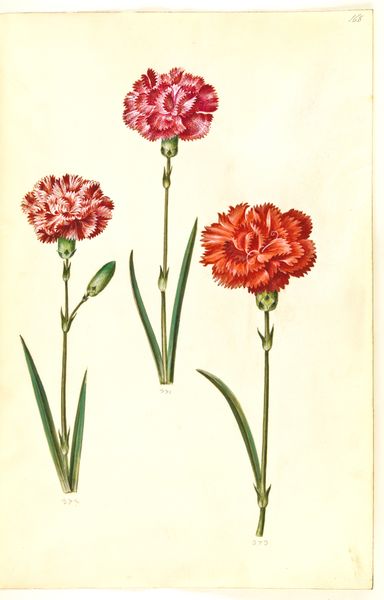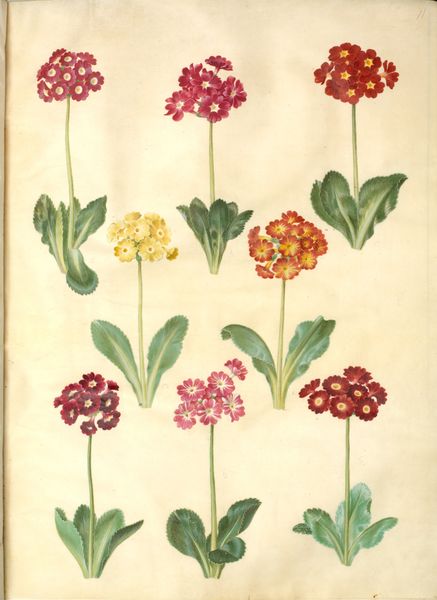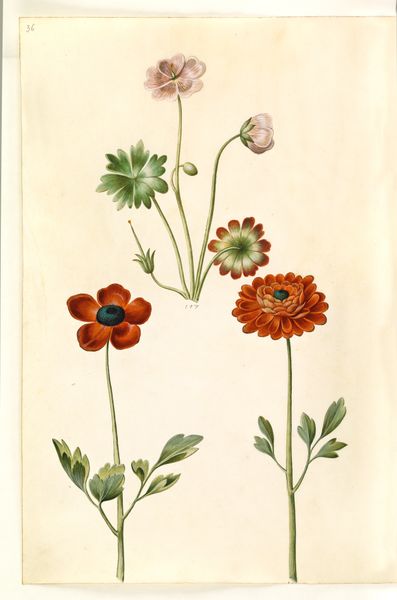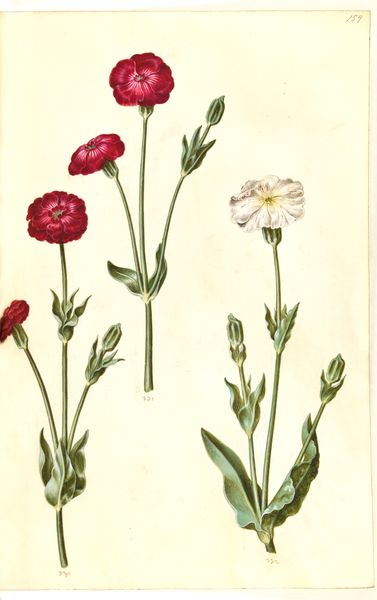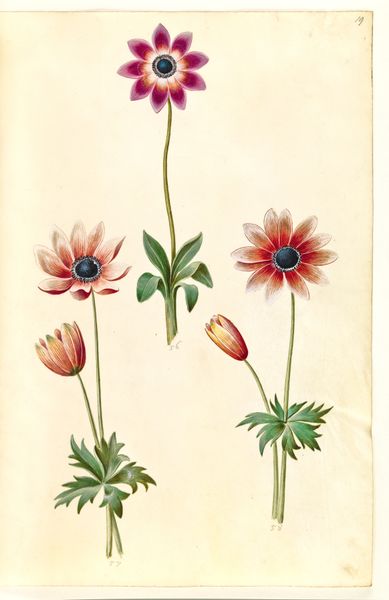
drawing, gouache
#
drawing
#
gouache
Dimensions: 375 mm (height) x 265 mm (width) x 85 mm (depth) (monteringsmaal), 358 mm (height) x 250 mm (width) (bladmaal)
Hans Simon Holtzbecker made this study of carnations with watercolour and gouache. The carnation here, known as Dianthus caryophyllus, is a symbol laden with meaning. In the 16th and 17th centuries, carnations were commonly associated with love, marriage, and affection. Their intricate, ruffled petals can also evoke a sense of beauty and delicacy, often seen in Renaissance portraits as tokens of betrothal or symbols of fidelity. Yet, delve deeper, and we find the carnation’s symbolism stretches back to antiquity, with its use in Roman garlands and Christian art as emblems of divine love. Consider how the Madonna is frequently depicted with these blooms, representing her maternal love and spiritual purity. These gestures and symbols aren’t static; they evolve, their meanings transform, shaped by collective memory and cultural context. The carnation, thus, becomes a vessel carrying the weight of history.
Comments
No comments
Be the first to comment and join the conversation on the ultimate creative platform.
